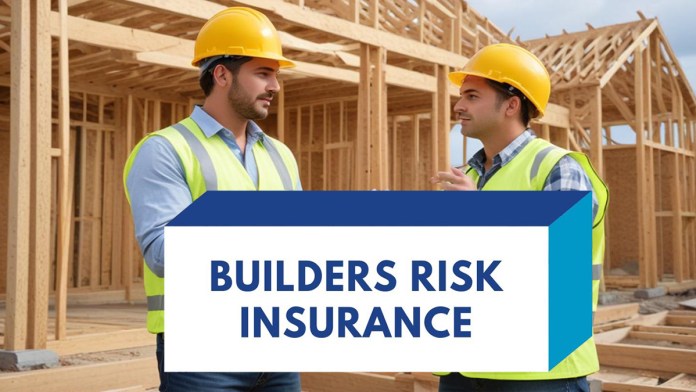Builder’s risk insurance shields property and construction materials during a construction project. It provides coverage for the property on the construction site when damage has been done or when something has been destroyed by fire, vandalism, or other unexpected events.

This type of coverage is only available to those who have builder’s risk insurance, so a builder or a commercial property could face a monetary loss if something goes bad with the construction of a building.
What is Builder’s Risk Insurance?
Builder’s risk insurance, also called course of construction insurance, is a property insurance policy that provides coverage for property in the course of construction. It’s advised that those with financial issues in a construction project should get builder’s risk insurance.
A mortgage or construction agreement may require your builder’s risk insurance, as it is business insurance. Read insurers’ quotes closely, and get a good insurance broker to work with to make sure you get the coverage you need.
What Does Builder’s Risk Insurance Cover?
Builder’s risk coverage is designed to provide protection against several types of problems, which include:
- Vandalism
- Fire or lightning
- Theft
- Property damage
- Hurricanes and others caused by nature
- Hail or windstorm
- Explosion
- Material in transit
Other things it may cover are:
- It covers buildings and structures that are under construction, such as temporary storage buildings, fencing, and scaffolding.
- If equipment is covered under the policy and it’s damaged, the insurance will have the equipment fixed.
- Things like materials and supplies used, construction signs, trees and plants, valuable papers, and electronic data labor are covered.
- It covers the ordinances and law costs, including the increased cost to repair or rebuild at the time of the loss.
A builder’s risk policies might also cover the following “soft” costs that resulted from the construction delays:
- Real estate taxes
- Lost sales income
- Rental income
- Additional interest on the loan
As a builder or a commercial property owner, without course of construction insurance, you could be at risk of facing a big monetary loss if something goes wrong with the construction of the buildings, equipment, or materials.
What Does It not Cover?
Here is the little exclusion not covered by builder’s risk insurance:
- Wear and tear
- Mechanical breakdowns
- Employee theft
- Acts of terrorism and war
- Damage due to negligence
- Rust and corrosion
By understanding this, you’d know which you should sort out yourself or which the builder’s risk coverage can get involved in.
Who Needs Builder’s Risk Insurance Coverage?
Every individual with a financial interest in a construction project, whether it’s being built or renovated, includes:
- Subcontractors
- builders
- Engineers
- lenders
- General contractors
- Building owners
- Development and investment companies
- Architects
By understanding how it works and the people who need it, you’ll know if you fall under the category of people who might need the course of construction instruction insurance.
What is a Builder’s Risk Form Most Often Written As?
Some builders’s risk policies are written on an all-perils basis, which is a more modern term referred to as perils form or special causes of loss.
How Much is Builder’s Risk Insurance?
The cost of a medium builder’s risk coverage is typically $95 monthly. It is ideal to choose a coverage limit that is equal to the estimated costs of construction.
Be sure to shop around for prices and coverage, as the exact coverage and policy limitations will vary among insurance providers.
How to Find the Right Builder’s Risk Insurance Policy
Finding the right builder’s risk insurance is the same as shopping for or buying other insurance. You first need to decide the amount of coverage you need and make sure to compare rates from different insurance companies. Here are ways to find the best builder’s risk coverage for your construction course:
- Firstly, think about the amount of coverage you need based on the cause of the project and where the risk lies, such as transportation, materials, the construction site, and storage.
- Secondly, it decides when you’ll need the insurance to start because you will need coverage once the contracts are signed. Your policy will attach information about when coverage begins, so you can decide when you want to start.
- Builder’s risk insurance is not long-term insurance; it typically ends when the project is done. You’ll get information concerning the specific conditions for when the coverage ends. So, it’s advised to check with your builder’s risk insurer when there’s a delay in the project, for which you’d need your coverage estimated or extended.
- Understanding the coverage of your course of construction insurance. Course of construction insurance doesn’t cover the costs associated with repairs or correcting faulty work caused by a subcontractor. But when your policy ensues, a loss provision may cover the damages and faulty work associated with the subcontractor.
By understanding this, you will know that exclusionary provisions differ by policy to avoid bad surprises under your builder’s risk insurance.



